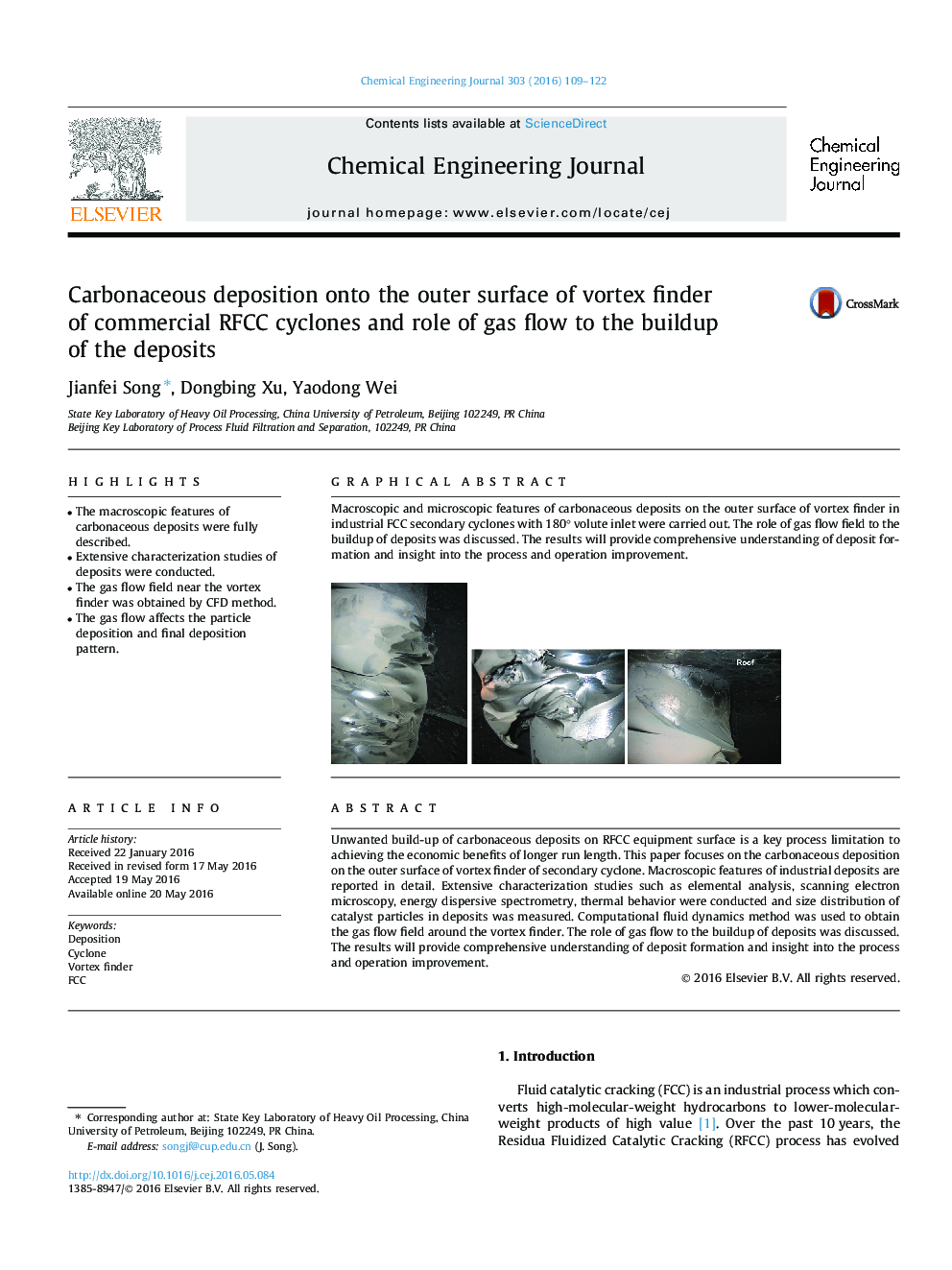| Article ID | Journal | Published Year | Pages | File Type |
|---|---|---|---|---|
| 145500 | Chemical Engineering Journal | 2016 | 14 Pages |
•The macroscopic features of carbonaceous deposits were fully described.•Extensive characterization studies of deposits were conducted.•The gas flow field near the vortex finder was obtained by CFD method.•The gas flow affects the particle deposition and final deposition pattern.
Unwanted build-up of carbonaceous deposits on RFCC equipment surface is a key process limitation to achieving the economic benefits of longer run length. This paper focuses on the carbonaceous deposition on the outer surface of vortex finder of secondary cyclone. Macroscopic features of industrial deposits are reported in detail. Extensive characterization studies such as elemental analysis, scanning electron microscopy, energy dispersive spectrometry, thermal behavior were conducted and size distribution of catalyst particles in deposits was measured. Computational fluid dynamics method was used to obtain the gas flow field around the vortex finder. The role of gas flow to the buildup of deposits was discussed. The results will provide comprehensive understanding of deposit formation and insight into the process and operation improvement.
Graphical abstractMacroscopic and microscopic features of carbonaceous deposits on the outer surface of vortex finder in industrial FCC secondary cyclones with 180° volute inlet were carried out. The role of gas flow field to the buildup of deposits was discussed. The results will provide comprehensive understanding of deposit formation and insight into the process and operation improvement.Figure optionsDownload full-size imageDownload as PowerPoint slide
